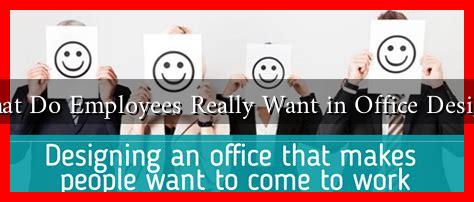-
Table of Contents
What Do Employees Really Want in Office Design?
In the modern workplace, office design has evolved from mere aesthetics to a critical factor influencing employee satisfaction, productivity, and overall well-being. As companies strive to create environments that foster collaboration and innovation, understanding what employees truly want in office design becomes paramount. This article delves into the key elements that employees desire in their workspaces, supported by research, statistics, and real-world examples.
The Shift in Workplace Expectations
Gone are the days when cubicles and closed offices dominated the landscape of corporate environments. Today’s employees seek spaces that reflect their needs and preferences. According to a survey by Gartner, 82% of employees prefer a hybrid work model, blending remote and in-office work. This shift has prompted organizations to rethink their office designs to accommodate flexible work styles.
Key Elements of Desired Office Design
Based on various studies and employee feedback, several key elements emerge as crucial in office design:
- Flexibility: Employees want spaces that can adapt to different tasks, whether it’s collaborative work, focused tasks, or relaxation. Open spaces, movable furniture, and multipurpose rooms are highly valued.
- Natural Light: Access to natural light has been shown to improve mood and productivity. A study by the Harvard Business School found that employees with ample natural light reported a 51% drop in eye strain and a 63% decrease in headaches.
- Biophilic Design: Incorporating elements of nature, such as plants and water features, can enhance employee well-being. Research indicates that biophilic design can reduce stress and increase creativity.
- Collaboration Spaces: Open areas designed for teamwork and brainstorming are essential. According to a study by Forbes, 70% of employees believe that collaboration is key to their success.
- Quiet Zones: While collaboration is important, employees also need spaces for focused work. Designated quiet areas can help employees concentrate and recharge.
Case Studies: Successful Office Designs
Several companies have successfully implemented these design principles, resulting in increased employee satisfaction and productivity:
- Google: Known for its innovative office spaces, Google incorporates flexible work areas, relaxation zones, and biophilic elements. Their offices feature open layouts with plenty of natural light, promoting collaboration and creativity.
- Airbnb: The company’s headquarters in San Francisco is designed to reflect its brand ethos. The open floor plan encourages teamwork, while private nooks provide quiet spaces for focused work. The use of local materials and art fosters a sense of community.
- WeWork: As a leader in flexible office spaces, WeWork designs environments that cater to diverse work styles. Their spaces include collaborative areas, private offices, and wellness rooms, allowing employees to choose how they work best.
The Role of Technology in Office Design
Technology plays a significant role in modern office design. Smart office solutions, such as IoT devices and collaborative software, enhance the employee experience. For instance, companies are increasingly using apps to manage workspace reservations, ensuring that employees can easily find the right environment for their tasks.
Conclusion: Designing for Employee Needs
In conclusion, understanding what employees want in office design is essential for creating a productive and satisfying work environment. Flexibility, natural light, biophilic elements, collaboration spaces, and quiet zones are key components that contribute to employee well-being and performance. As organizations continue to adapt to the changing landscape of work, prioritizing these elements in office design will not only enhance employee satisfaction but also drive business success. By investing in thoughtful office design, companies can create spaces that inspire creativity, foster collaboration, and ultimately lead to a more engaged workforce.

